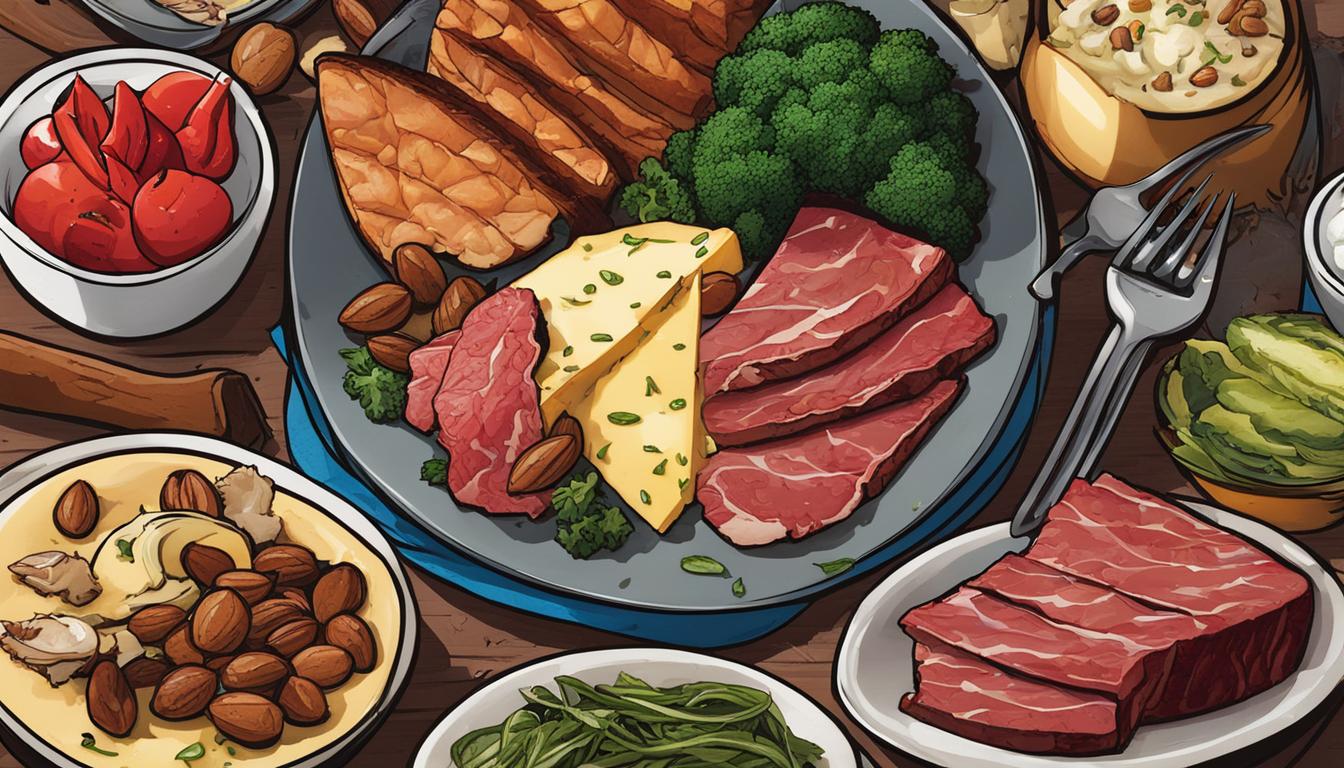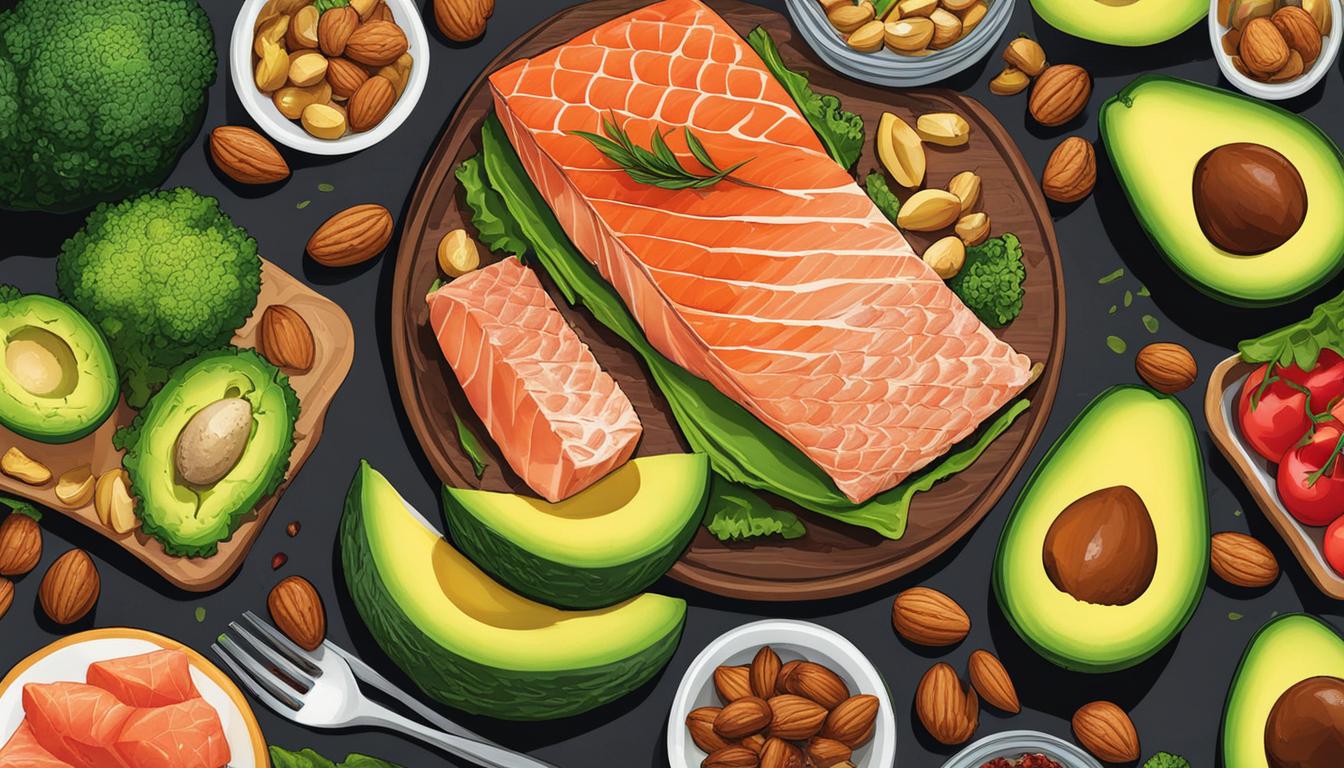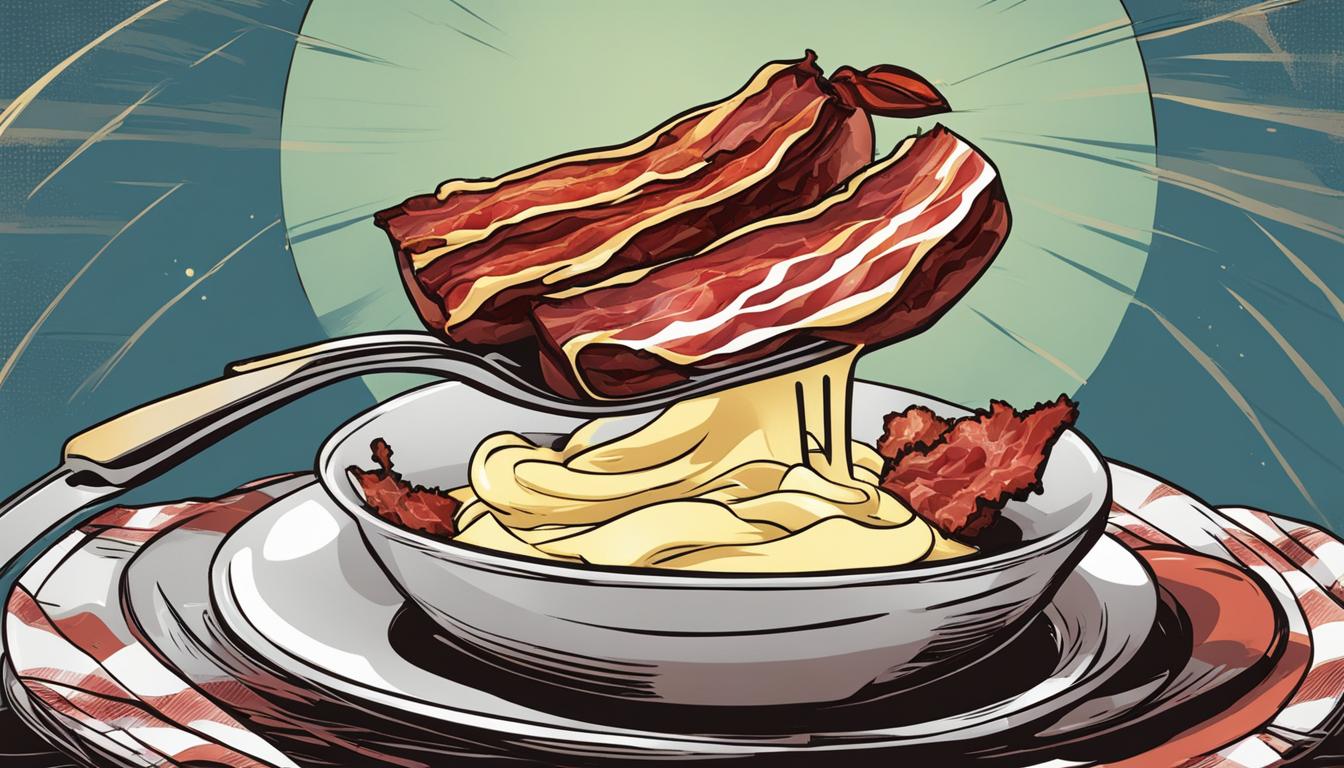
Welcome to your comprehensive resource for a free dirty keto meal plan! If you’re eager to begin a ketogenic lifestyle but desire the freedom to incorporate more flexible, convenient food choices, the dirty keto diet might be the ideal solution. This guide is designed to thoroughly introduce you to the dirty keto approach, providing a deep understanding of its principles compared to the traditional keto diet, and highlighting both the potential benefits and risks associated with dirty keto.
As we explore the essentials of the ketogenic diet, including its fundamental focus on high-fat, low-carb eating, we will detail how dirty keto differs by allowing for less stringent food quality standards, which makes it easier for many to adhere to. You’ll learn about the variety of food options that fit within a dirty keto framework, helping you maintain a low-carb regimen while still enjoying pre-packaged and convenience foods.
This guide also offers practical tips and strategies for succeeding on a dirty keto diet, including meal planning ideas, suggestions for navigating common pitfalls, and advice on how to make dirty keto a sustainable part of your lifestyle. Additionally, we’ll discuss the nutritional aspects to consider, ensuring that you can make informed choices while enjoying the flexibility of dirty keto.
Get ready to embark on your journey to a healthier, low-carb lifestyle with our free dirty keto meal plan. Whether you are completely new to ketogenic eating or looking for a more lenient approach to maintain your low-carb diet, this guide will equip you with everything you need to succeed with dirty keto. Let’s dive in and transform your eating habits with our expert advice and delicious, easy-to-follow dirty keto meal plans!
Key Takeaways:
- Dirty keto focuses on high-fat, low-carb meals using processed and pre-packaged foods.
- While it may lead to initial weight loss, it’s important to consider the long-term health implications of consuming nutrient-poor foods.
- The keto diet restricts carbohydrate intake to promote ketosis, a metabolic state where the body uses stored fat as fuel.
- Dirty keto benefits include convenience and short-term weight loss, but there are risks associated with a diet high in processed foods.
- When following a dirty keto meal plan, prioritize high-fat options and avoid processed foods, high-carb foods, and added sugars.
What is Dirty Keto?
Dirty keto is a term used to describe a type of ketogenic diet that focuses primarily on macronutrient ratios rather than food quality. In this approach, the goal is to consume high amounts of fat, moderate protein, and minimal carbohydrates to achieve a state of ketosis. However, unlike clean keto, which emphasizes whole, nutrient-dense foods, dirty keto allows for the inclusion of processed and artificial foods.
Dirty keto followers often opt for convenience and flexibility by incorporating items such as fast food burgers without the bun or sugar-free desserts. While this approach may provide initial weight loss benefits, it is important to consider the long-term health implications of relying on nutrient-poor foods on a regular basis.
It is essential to note that dirty keto should not be confused with clean keto. Clean keto emphasizes the consumption of whole, unprocessed foods that are rich in nutrients. By prioritizing nutrient-dense options, clean keto supports overall health and wellness while still maintaining the desired macronutrient ratios for ketosis.
The Differences Between Dirty Keto and Clean Keto
| Dirty Keto | Clean Keto |
|---|---|
| Includes processed and artificial foods | Emphasizes whole, unprocessed foods |
| Allows for fast food and sugar-free desserts | Prioritizes nutrient-dense options |
| Focuses on macronutrient ratios over food quality | Considers both macronutrient ratios and food quality |
Dirty keto allows for the consumption of processed and artificial foods while disregarding the quality of the ingredients. Clean keto, on the other hand, emphasizes the importance of whole, nutrient-dense foods to support overall health and well-being.
When considering which approach to follow, it is crucial to assess your individual health goals and prioritize the long-term impact of your dietary choices. Consulting with a healthcare professional or a registered dietitian can provide valuable guidance in determining the best approach for your specific needs.
The Basics of the Keto Diet
The keto diet, also known as the ketogenic diet, is a low-carb, high-fat meal plan that has gained popularity for its potential weight loss and health benefits. By drastically reducing carbohydrate intake and replacing it with fat, the body enters a state of ketosis. In this metabolic state, the body becomes more efficient at burning fat for energy instead of relying on carbohydrates.
Ketosis occurs when the liver breaks down fatty acids into ketones, which are then used as an alternative fuel source. This shift in metabolism can result in weight loss, improved focus and mental clarity, and increased energy levels. It can also help stabilize blood sugar levels and reduce inflammation in the body.
How Does the Keto Diet Work?
The keto diet works by limiting carbohydrate intake to a very low level, typically around 20-50 grams per day. This restriction forces the body to enter a metabolic state called ketosis, where it begins burning stored fat for fuel. To maintain ketosis, it is important to consume a high amount of dietary fats and moderate amounts of protein. This ratio of macronutrients promotes the production of ketones and allows the body to continue using fat as its primary source of energy.
While the keto diet focuses on low carbohydrate intake, it is important to note that not all carbohydrates are created equal. The diet encourages the consumption of non-starchy vegetables, such as leafy greens, broccoli, and cauliflower, which are low in carbs but rich in vitamins, minerals, and fiber. Additionally, it emphasizes healthy fats from sources like avocados, nuts, and olive oil to support satiety and overall health.
| Allowed Foods | Avoided Foods |
|---|---|
| – Meat and poultry | – Grains and cereals |
| – Fish and seafood | – Legumes and beans |
| – Eggs and dairy products | – Sugary foods and beverages |
| – Non-starchy vegetables | – High-carb fruits |
| – Healthy fats and oils | – Processed and packaged snacks |
It is important to remember that the keto diet is not suitable for everyone and should be approached with caution. It is always recommended to consult with a healthcare professional before embarking on any new diet or lifestyle change.

Benefits and Risks of Dirty Keto
Dirty keto, while offering convenience and potential short-term weight loss benefits, comes with its own set of risks. Let’s take a closer look at the benefits and risks associated with this approach.
Benefits of Dirty Keto
One of the main benefits of dirty keto is the flexibility it allows in food choices. It allows for processed and pre-packaged foods to be included in the diet, which can be convenient for those with busy lifestyles. Additionally, dirty keto can provide an initial boost in weight loss due to the body entering a state of ketosis, where it burns stored fat for energy.
Risks of Dirty Keto
However, it’s important to consider the potential risks of following a dirty keto diet. Consuming a diet high in processed foods can lead to nutrient deficiencies, as these foods often lack the essential vitamins, minerals, and fiber found in whole, nutrient-dense foods. Over time, relying on processed foods can also have negative effects on overall health and increase the risk of chronic diseases.
Moreover, dirty keto may not provide the same long-term health benefits as a clean keto diet that focuses on whole, nutrient-dense foods. Clean keto emphasizes the importance of consuming quality sources of fat, protein, and carbohydrates, which can improve overall nutrition and support optimal health.
Foods to Include in a Dirty Keto Meal Plan
When following a dirty keto meal plan, it is important to choose foods that are high in fat and low in carbohydrates. This approach allows for flexibility and convenience while still adhering to the macronutrient ratios of a ketogenic diet. By including a variety of nutrient-dense options, you can support your health and well-being while following the principles of dirty keto.
High Fat Foods:
- Fatty meats such as beef, pork, and lamb
- Eggs, a great source of healthy fats and protein
- Cheese and other full-fat dairy products
- Butter and other natural oils
- Nuts and seeds like almonds, walnuts, and chia seeds
- Avocado, a rich source of monounsaturated fats
Low Carb Vegetables:
- Spinach, a nutrient-packed leafy green
- Broccoli, rich in vitamins C and K
- Zucchini, a versatile and low-carb option
- Cauliflower, which can be used as a substitute for rice or mashed potatoes
- Kale, another nutritious leafy green
By incorporating these high-fat foods and low carb vegetables into your dirty keto meal plan, you can create a balanced and nourishing approach to eating while still enjoying the flexibility of this diet style.
Sample Dirty Keto Meal Plan
| Meal | Food Choices |
|---|---|
| Breakfast | Scrambled eggs with bacon and avocado |
| Lunch | Burger patty with cheese, lettuce, and tomato (no bun) |
| Dinner | Baked salmon with butter and roasted broccoli |
| Snack | Almonds and celery sticks with cream cheese dip |
Remember, it is important to listen to your body and make adjustments as needed. This sample meal plan provides a starting point, but feel free to customize it to suit your taste preferences and dietary needs. Always consult with a healthcare professional or registered dietitian before making any significant changes to your diet.
Foods to Avoid in a Dirty Keto Meal Plan
When following a dirty keto meal plan, it is essential to be mindful of the types of foods you should avoid. These foods can hinder your progress and have negative impacts on your health. By eliminating them from your diet, you can ensure that you are nourishing your body with nutrient-dense options and maintaining the desired macronutrient ratios.
Processed Foods
Processed foods should be avoided in a dirty keto meal plan. These foods often contain added sugars, unhealthy fats, and artificial additives. They lack essential nutrients and can contribute to inflammation and weight gain. Instead, opt for whole foods that are minimally processed and contain natural ingredients.
High Carb Foods
High carb foods such as grains, legumes, and starchy vegetables should be avoided in a dirty keto meal plan. These foods are rich in carbohydrates and can prevent your body from entering ketosis, which is the metabolic state necessary for fat burning. Stick to low-carb vegetables and other keto-friendly alternatives to maintain ketosis and promote fat loss.
Sugar
Avoid sugar in all its forms when following a dirty keto meal plan. This includes sugary beverages, desserts, and processed foods that contain hidden sugars. Excessive sugar consumption can lead to weight gain, inflammation, and a host of other health issues. Instead, satisfy your sweet cravings with natural sweeteners like stevia or monk fruit.
Grains
In a dirty keto meal plan, it is important to avoid grains such as wheat, rice, oats, and corn. These foods are high in carbohydrates and can spike your blood sugar levels, making it difficult to achieve and maintain ketosis. Replace grains with low-carb alternatives like cauliflower rice or almond flour-based recipes.
By eliminating these processed foods, high carb foods, sugar, and grains from your dirty keto meal plan, you can ensure that you are fueling your body with nutrient-dense options and supporting your overall health and well-being.
Tips for Success with Dirty Keto
Successfully following a dirty keto meal plan requires careful consideration and planning. Here are some tips to help you navigate the world of dirty keto and achieve your health and wellness goals:
Evaluate your food choices
While dirty keto allows for flexibility in food choices, it is important to evaluate the quality of the foods you consume. Opt for whole, nutrient-dense options whenever possible, rather than relying solely on processed and pre-packaged foods. Incorporating sources of healthy fats, such as avocados and nuts, can help support overall wellness.
Create a meal plan
Meal planning is essential for success with dirty keto. Take the time to plan your meals and snacks in advance, ensuring they align with your macronutrient goals. This can help you stay on track and avoid impulsive food choices. Consider using a meal planning app or template to streamline the process and keep yourself organized.
Stay hydrated
Hydration is crucial for overall health, especially when following a ketogenic diet. Aim to drink at least 8 cups of water per day to ensure proper hydration. You may also include herbal teas or flavored water to add variety. Staying hydrated can support your body’s adaptation to ketosis and help prevent potential side effects, such as headaches and fatigue.
By following these tips, you can enhance your success with dirty keto and optimize your health and well-being. Remember to consult with a healthcare professional before starting any new diet plan to ensure it aligns with your individual needs and goals.
Frequently Asked Questions about Dirty Keto
Curious about the ins and outs of dirty keto? We’ve got you covered with answers to some common questions and dieting tips. Take a look below:
1. What is the difference between dirty keto and clean keto?
Dirty keto focuses solely on macronutrient ratios, disregarding food quality. It allows for processed and pre-packaged foods that fit within the low-carb, high-fat guidelines. On the other hand, clean keto emphasizes consuming whole, nutrient-dense foods to support overall health while still maintaining the same macronutrient ratios.
2. Can I still lose weight on a dirty keto diet?
Yes, you can still experience weight loss on a dirty keto diet due to its low-carb nature. However, it’s important to note that weight loss doesn’t solely depend on the macronutrient ratios but also on overall calorie intake and the quality of the foods you consume.
3. Are there any health benefits to dirty keto?
While dirty keto may offer initial weight loss benefits, it’s important to consider the long-term implications of consuming nutrient-poor foods. Prioritizing whole, nutrient-dense foods in your diet can provide a broader range of health benefits, such as improved digestion, enhanced energy levels, and better overall well-being.
4. Do I need to meal prep on a dirty keto diet?
Meal prepping can be a helpful strategy for success on any diet plan, including dirty keto. Planning and preparing your meals in advance can ensure that you have suitable options available and help you stay on track with your macronutrient ratios. It also saves time and reduces the temptation to reach for unhealthy convenience foods.
5. How can I stay hydrated while on a dirty keto diet?
Staying hydrated is crucial for overall health and can support your body’s adaptation to ketosis. Make sure to drink plenty of water throughout the day and consider incorporating electrolyte-rich foods or supplements to replenish essential minerals that may be lost through increased water consumption.

Conclusion
In conclusion, the dirty keto meal plan offers convenience and flexibility for those following a ketogenic diet. It allows for the inclusion of processed and pre-packaged foods, making it easier to adhere to the high-fat, low-carb macronutrient ratios. While this approach may lead to initial weight loss, it is important to consider the long-term health implications.
It is crucial to prioritize whole, nutrient-dense foods for overall health and well-being. The consumption of processed and nutrient-poor foods on a regular basis may lead to nutrient deficiencies and potential health problems. Therefore, while the dirty keto approach may offer convenience, it is advisable to seek a balance by incorporating nutrient-dense options.
Before starting any new diet plan, it is always recommended to consult with a healthcare professional to ensure it aligns with your individual needs and goals. They can provide personalized guidance and support to help you make informed decisions about your dietary choices. Remember, your health is paramount, and it’s important to prioritize long-term well-being over short-term convenience.
FAQ
What is dirty keto?
Dirty keto is a type of ketogenic diet that focuses on macronutrient ratios (high fat, moderate protein, low carbs) without considering food quality. It often includes processed and artificial foods.
What is the difference between dirty and clean keto?
Dirty keto prioritizes macronutrient ratios without considering food quality, while clean keto focuses on consuming whole foods and nutrient-dense options.
What are the benefits of dirty keto?
Dirty keto may offer convenience and short-term weight loss benefits.
What are the risks of dirty keto?
Consuming a diet high in processed foods and low in nutrient-dense options may lead to nutrient deficiencies and long-term health problems.
What foods should I include in a dirty keto meal plan?
Foods to include are fatty meats, eggs, cheese, butter, and low-carb vegetables like spinach, broccoli, and zucchini.
What foods should I avoid in a dirty keto meal plan?
It is crucial to avoid processed foods, high-carb foods, and sources of added sugar. This includes grains, legumes, starchy vegetables, processed meats, sugary beverages, and desserts.
What tips can help me succeed with dirty keto?
Plan ahead, track your macros, and stay hydrated. Meal planning can help ensure you have appropriate options available, and tracking your macros can help maintain the desired macronutrient ratios. Additionally, staying hydrated is crucial for overall health and can support the body’s adaptation to ketosis.
Source Links
Discover more from reviewer4you.com
Subscribe to get the latest posts to your email.




